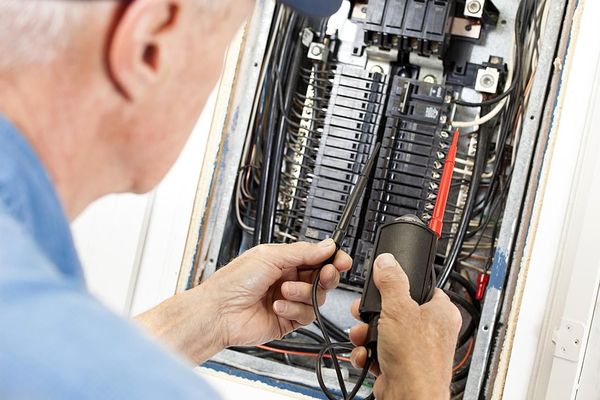REMOVE AND INSTALL A CIRCUIT BREAKER
From time to time, circuit breakers within your electrical panel get weak or go bad. This may be caused by a circuit problem that has repeatedly tripped the breaker. An overloaded circuit could be the culprit in this scenario. Then again, too often some people like to use the circuit breakers as switches. This is a bad practice and should be avoided. Turning the circuit breakers on and off should be left for servicing the circuits connected to them.
Wear and tear on the circuit breaker switch and springs within should be avoided. These mechanical devices will fail over time and do to excessive wear, so limit the number of times that you do turn them off and on.
There are instances where power spikes and lightning hits have also damaged circuit breakers. Them there's water damage due to leaks or flooding. Whatever the reason, replacing the circuit breaker should be the cure. They are relatively inexpensive and are extremely easy to replace, that is if you are electrically inclined. to help you understand the procedure and guide you through the process, I've compiled a list of steps to lead you through replacing a circuit breaker. Read each step carefully and proceed with caution. If you are at all unsure of your ability, please call a professional so you are not injured.
Difficulty: Easy
Time Required: Under 15 MINUTES
Here's How:
Before you can actually tear into the project, you’ll need to find out what brand, type, and size breaker you’ll be replacing. For instance, it may be a Square D®, Homeline, 20 amp breaker that you are replacing. Breakers come in many different shapes and sizes. You should never place a different brand breaker in place of the correct replacement. You may not be able to see a difference, but believe me, there are differences in tension, the way they connect in the holder, and how deeply they mount to the buss. Compare Prices
Once you have the new breaker, remove the screws holding the panel face on. I suggest leaving the middle two screws until last. Loosen the two remaining screws while holding the cover from falling to the ground. Be very careful not to let the cover tip into the panel because the panel is live. If you are at all afraid to work on the panel at this point, either turn off the main breaker or call a professional.
Now that the cover is off, locate the breaker to be replaced. Turn off the breaker and remove the wire from it and carefully bend it away from the inner panel. Now, carefully pull the breaker from the inner part of the panel and pull it towards the outer side of the panel. The breaker should then pull out towards you. Be careful not to touch the buss bar, if the main breaker is still energized.
Take the new breaker and install it, reversing the sequence used to remove the old one. First attach the back of the breaker into the back holder clip and gently push the breaker into place. In some cases, this will require a little more force. Make sure it lines up with the buss bar as you install it.
Reconnect the wire that you removed and tighten securely. Replace the panel cover and its screws before turning on the power. Now turn on the breaker or breakers that you turned off.
Check to see if the circuit is on. Breaker removal and installation isn’t hard if you follow these easy-to-follow steps.
Tips:
WARNING: Always stand to the side of the panel when turning on a breaker. Look away from the panel until the power is on. The reason for this safety move is to protect your face and eyes from a panel blowing up in your face. In fact, I’d suggest that you always wear safety glasses when working with live electrical components and devices.
Things You'll Need
Phillips Screwdriver
Straight Blade Screwdriver
Electrical Tester
Compare Prices
Safety Glasses
Replacement Breaker
Compare Prices




Comments
Post a Comment